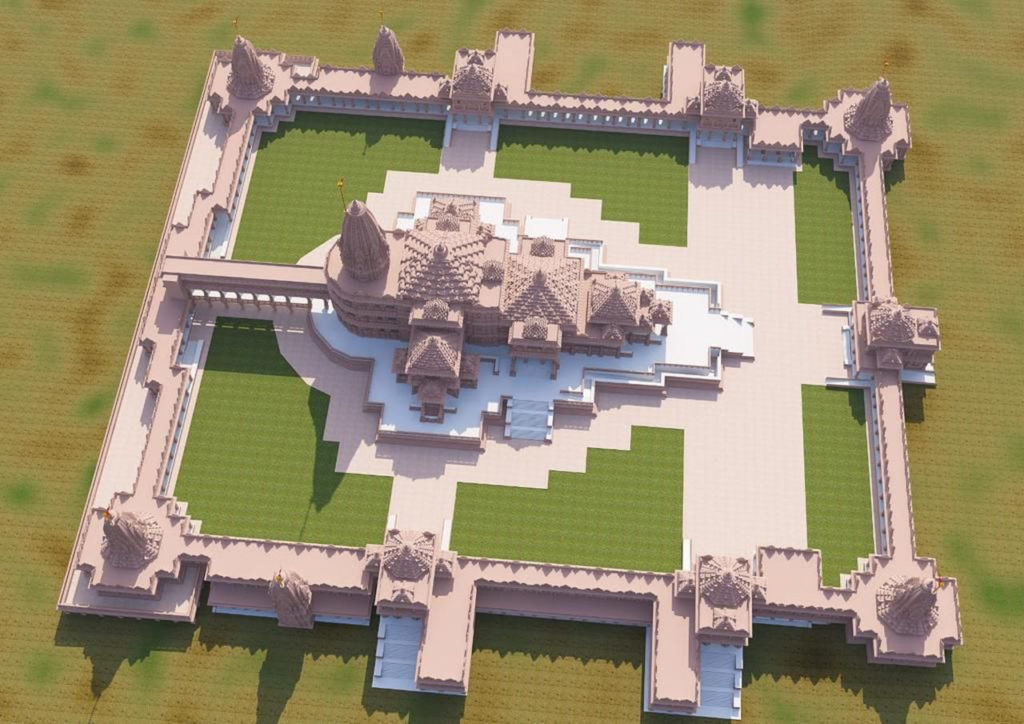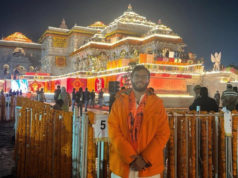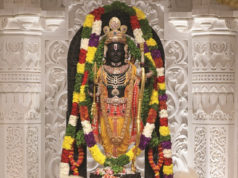
In the sacred city of Ayodhya, where the celestial tales of Lord Rama have woven themselves into the very fabric of the land, a momentous chapter in India’s cultural narrative is unfolding. The Shri Ram Janmabhoomi Temple, a monument that encapsulates centuries of faith, resilience, and architectural brilliance, is poised to mark its historic presence with the auspicious consecration ceremony scheduled for January 22nd. This monumental edifice transcends the physical realm; it is an embodiment of a 500-year-long struggle, a revival of cultural heritage, and a testament to the enduring spirit of millions who have yearned for this sacred abode.
Historic Significance and Faith Associated:
The site, considered the birthplace of Lord Rama, has been a focal point of religious and cultural discourse for centuries. The construction of the Shri Ram Janmabhoomi Temple holds immense historic importance, signifying the end of a prolonged legal battle and the realization of the aspirations of millions of devotees.
The temple is not just a physical structure; it embodies the collective faith of the people who have yearned for this moment for generations. The devotion and determination displayed by the devotees and the wider community have played a pivotal role in bringing this dream to fruition.
Architectural Features:
The Shri Ram Janmabhoomi Temple is a masterpiece of traditional Indian architecture, constructed in the Nagar style. Here are some noteworthy features of the temple:
- Dimensions: The temple spans 380 feet in length, 250 feet in width, and stands at a majestic height of 161 feet.
- Structure: With three storeys, 392 pillars, and 44 gates, the temple is a blend of grandeur and intricate design.
- Deities: The main sanctum will house the child form of Lord Shri Ram (Shri Ram Lalla Sarkar), while the first floor will feature Shri Ram Darbar.
- Pavilions: The temple boasts five pavilions – Dance Pavilion, Color Pavilion, Sabha Pavilion, Prayer Pavilion, and Kirtan Pavilion.
- Artistic Elements: Exquisite statues of various Gods and Goddesses are being meticulously carved on pillars and walls.
- Accessibility: The temple will be accessible through an east-facing entry, featuring 32 stairs and Singhdwar. Additionally, ramps and lifts will ensure ease of access for the disabled and elderly.
Environmental and Infrastructural Considerations:
The construction of the Shri Ram Janmabhoomi Temple is not only focused on religious and architectural aspects but also emphasizes environmental sustainability and infrastructure development:
- No Iron Usage: The temple avoids the use of iron, with no concrete on the ground.
- RCC Base: A 14-meter thick Roller Compacted Concrete (RCC) has been laid under the temple, taking the form of an artificial rock.
- Plinth: A 21 feet high granite plinth has been erected to protect the temple from soil moisture.
- Utilities: Independent sewer treatment and water treatment plants, a fire-fighting water system, and a power station are part of the complex to minimize external resource dependence.
- Pilgrims Facility Center: A state-of-the-art facility center is under construction, catering to the needs of 25,000 pilgrims with lockers, medical facilities, and amenities like bathrooms and wash basins.
- Environmental Focus: The temple, covering 70 acres, dedicates 70% of its area to green spaces, showcasing a commitment to environmental conservation.
As the Shri Ram Janmabhoomi Temple stands on the precipice of consecration, it heralds more than a religious ceremony; it signifies a cultural renaissance, a reawakening of shared heritage, and the triumph of collective faith. In the heart of Ayodhya, where the divine meets the terrestrial, this temple becomes a living testament to India’s cultural legacy and the indomitable spirit that unites its people in reverence and celebration.






